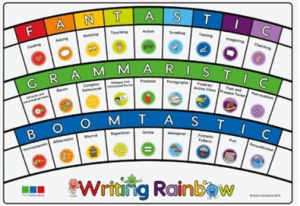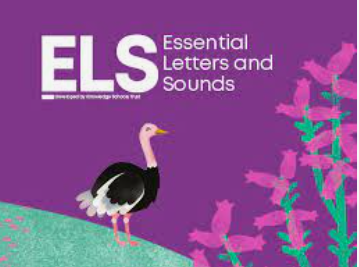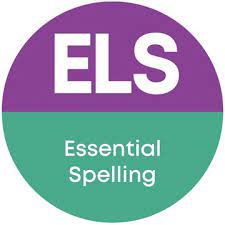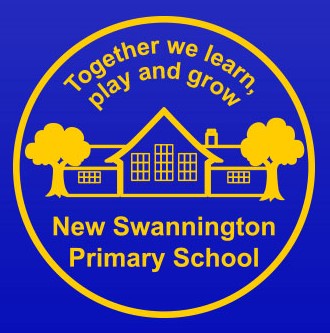English

English Lead - Mrs Palumbo
Implementation
At New Swannington we have adopted ‘The Write Stuff’ by Jane Considine to bring clarity and consistency to the mechanics of writing and to enable our children to write effectively and coherently. As a school, all children from EYFS to Year 6 learn to write through the Write Stuff approach. This was developed by teacher and leading English consultant, Jane Considine. It is a fun, creative and rigorous approach to develop children’s writing. This approach allows children to apply basic skills, vocabulary and grammar knowledge to write effective sentences, which are full of impact and keep the reader interested.
In The Write Stuff approach to writing, the children explore high level, rich vocabulary and are taught grammar in context through different writing lenses on the Writing Rainbow. There are three lenses used to support children with their writing:
Fantastics – ideas for writing
Grammaristics – tools for writing
Boomtastics – writing techniques

The Write Stuff is based on two guiding principles; teaching sequences that slide between experience days and sentence stacking lessons.
As part of the teaching sequence, teachers plan experience days; sentence stacking lessons and independent writing sequences. Experience days immerse children in experiences linked to their writing and drench them in vocabulary linked to the lenses in ‘The Writing Rainbow’. From the experience days, children take part in the sentence stacking lessons. Sentence stacking lessons focus on writing three sentences with focuses on lenses of the rainbow.
‘The Write Stuff’ follows a method called ‘Sentence Stacking’ which refers to the fact that sentences are stacked together and organised to engage children with short, intensive moments of learning that they can then immediately apply to their own writing.
An individual lesson is based on one plot point from the text, broken in to three learning chunks:
- 1. Initiate section – a stimulus to capture the children’s imagination and set up a sentence.
- 2. Model section – the teacher models a sentence that outlines clear writing features and techniques.
- 3. Enable section – the children write their sentence, following the teacher’s model.
This part of the unit is heavily scaffolded with lots of teacher input and modelling of vocabulary use, sentence construction and use of grammar with reference to the 3 writing lenses.
During the initiate section children ‘chot’ (chat and jot) down their ideas from stimulating resources, such as pictures, music and drama. The children are encouraged to use ‘kind calling out’ where they call out examples of vocabulary, adverbs, onomatopoeia etc.
During the Model section the teacher prepares children for writing by modelling the ideas, grammar and techniques of writing taken from the writing rainbow.
In the Enable section pupils write their own sentences, taking the opportunity to deepen the moment. ‘Deepen the Moment’ is where children are challenged to independently draw upon previously learnt skills and apply them to their writing during that chunk.
Following the sentence stacking, children are given the opportunity to show what they have learnt by planning and writing their own independent piece of writing. After they have written their independent piece, their work is marked by the class teacher who identifies different aspects of their written piece to be edited. There are 3 elements to the editing;
E1 Edit: The Revise
Edit Type 1: These are often ‘little’ adjustments or changes and tend to fall into one of these categories; Spellings Missing words or Punctuation
E2 Edit: The Rewrite
Edit Type 2: Children are asked to re-write a sentence if it doesn’t make sense, could be restructured or generally improved.
E3 Edit: The Reimagine
Edit Type 3: This is when a writer wants to add more sentences to develop an idea further. For this the children show the additional sentences added into their work.
The Write Stuff provides a balance of narrative, non-fiction and poetry writing throughout each term.
Impact
Having followed the Write Stuff approach to developing their writing skills children should be able to
- write for a range of purposes including diary entries, persuasive letters, stories, poems and recounts to name but a few.
- use their vast knowledge of vocabulary to excite, inform or entertain the reader.
- understand a range of punctuation and the effect it can have on the reader in both writing and reading.
- understand and be able to use a range of grammatical devices.
- understand the various sentence types that can be used to support different genres.
- spell accurately using their phonetic knowledge and apply spelling rules.
- to speak clearly, fluently and coherently, to be able to listen attentively with understanding, pleasure and empathy and contribute to group discussions
Phonics

Essential Letters and Sounds (ELS) is our chosen Phonics programme. The aim of ELS is ‘Getting all children to read well, quickly’. It teaches children to read by identifying the phonemes (the smallest unit of sound) and graphemes (the written version of the sound) within words and using these to read words.
Children begin learning Phonics at the very beginning of EYFS and it is explicitly taught every day during a dedicated slot on the timetable. Children are given the knowledge and the skills to then apply this independently.
Throughout the day, children will use their growing Phonics knowledge to support them in other areas of the curriculum and will have many opportunities to practise their reading. This includes reading 1:1 with a member of staff, with a partner during paired reading and as a class.
Children continue daily Phonics lessons in Year 1 and further through the school to ensure all children become confident, fluent readers.
We follow the ELS progression and sequence. This allows our children to practise their existing phonic knowledge whilst building their understanding of the ‘code’ of our language GPCs (Grapheme Phoneme Correspondence). As a result, our children can tackle any unfamiliar words that they might discover.
Children experience the joy of books and language whilst rapidly acquiring the skills they need to become fluent independent readers and writers. ELS teaches relevant, useful and ambitious vocabulary to support each child’s journey to becoming fluent and independent readers.
We begin by teaching the single letter sounds before moving to diagraphs ‘sh’ (two letters spelling one sound), trigraphs ‘igh’ (three letters spelling one sound) and quadgraphs ‘eigh’(four letters spelling one sound).
We teach children to:
• Decode (read) by identifying each sound within a word and blending them together to read fluently
• Encode (write) by segmenting each sound to write words accurately.
The structure of ELS lessons allows children to know what is coming next, what they need to do, and how to achieve success. This makes it easier for children to learn the GPCs we are teaching (the alphabetic code) and how to apply this when reading.
ELS is designed on the principle that children should ‘keep up’ rather than ‘catch up’. Since interventions are delivered within the lesson by the teacher, any child who is struggling with the new knowledge can be immediately targeted with appropriate support. Where further support is required, 1:1 interventions are used where needed. These interventions are short, specific and effective.
Supporting Reading at Home:
- Children will only read books that are entirely decodable, this means that they should be able to read these books as they already know the code contained within the book.
- We only use pure sounds when decoding words (no ‘uh’ after the sound)
- We want children to practise reading their book 3 times across the week working on these skills:
Decode – sounding out and blending to read the word.
Fluency – reading words with less obvious decoding.
Expression – using intonation and expression to bring the text to life!
- We must use pure sounds when we are pronouncing the sounds and supporting children in reading words. If we mispronounce these sounds, we will make reading harder for our children. Please watch the videos on the Phonics and Reading page for how to accurately pronounce these sounds.
Spelling

In Year 2 the children follow the ELS essential spelling scheme.
ELS Essential Spelling gives all children the knowledge to spell, confidently.
ELS Essential Spelling for Year 2 uses code knowledge as its approach to spelling, and is a programme designed to teach rather than test. The three lessons each week allow children to build upon their understanding of the sounds they have previously been taught as part of their phonics programme and gives them the confidence to use this code to support spelling.
Teachers use whiteboard presentations alongside the spelling poster, sound mats and apply books to teach their class.
At New Swannington, we have enhanced our teaching of spelling in Key Stage 2, by introducing 'Essential Spelling and Word Knowledge.'
Essential Spelling and Word Knowledge is a way of thinking about words that enables pupils to understand the patterns in the English language using a combination of morphology, etymology and awareness of phonological rules.
This programme is not just about spelling. Essential Spelling and Word Knowledge uses morphology to teach pupils the meanings of affixes and how they combine with the root morpheme to make a word. By linking spelling and word construction to meaning, it equips pupils with the knowledge to work out the meanings of words as well as allowing repeated opportunities for the children to practice and apply spelling patterns that they can use forever.
